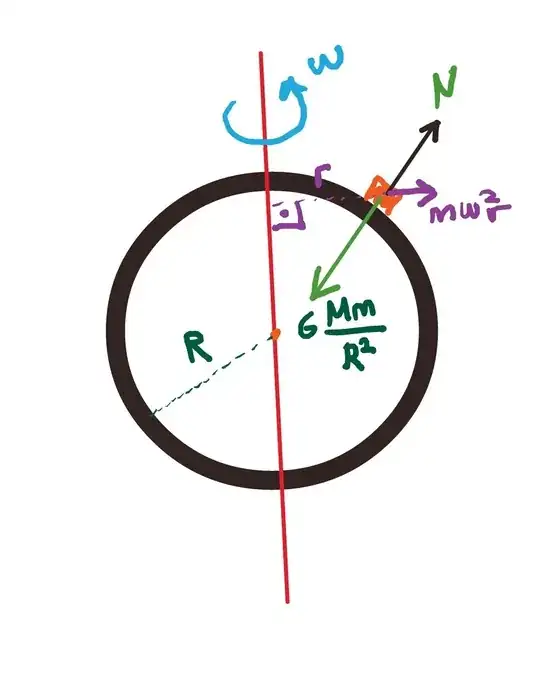I have imagined the Earth as a perfect sphere with uniform mass density and I put an object somewhere between the equator and the north pole at rest with respect to earth. And also in my imaginary world, there is no air resistance.
When I draw the free body diagram of the object including the pseudo force, I cannot see how these three forces will cancel.
Would we need force of friction in order to be able to stand still in my imaginary world?
After @Fiatlux's answer, I've realized that I may even have discovered for myself the fundamental reason behind Earth's real shape accidentally.
I have another thing that's bugging me now. Let say we create a perfect frictionless horizontal plane and we put an object there. Is there a chance it might start moving depending on where we conduct the experiment or the Earth's shape and density distribution forbid this to happen anywhere on Earth?
